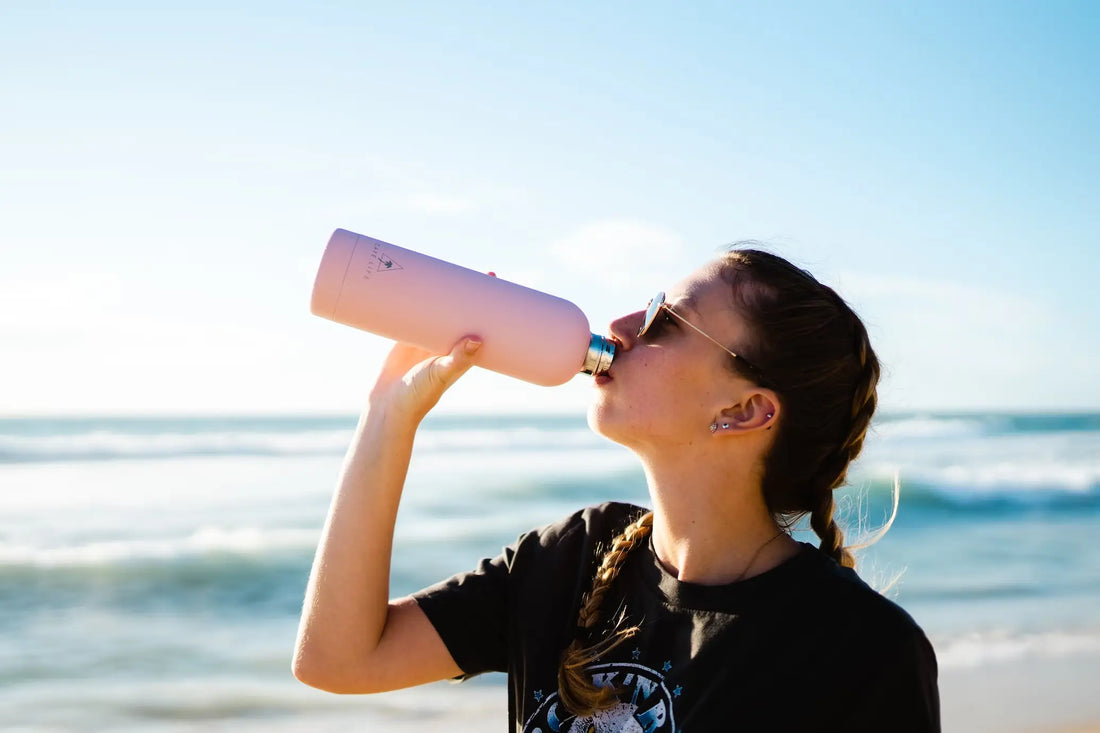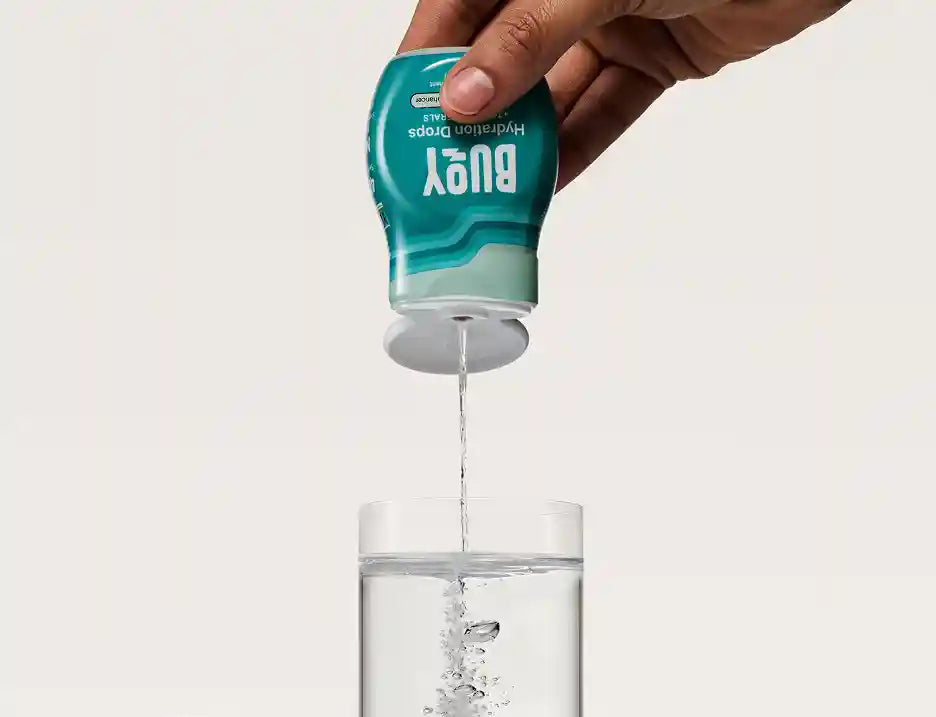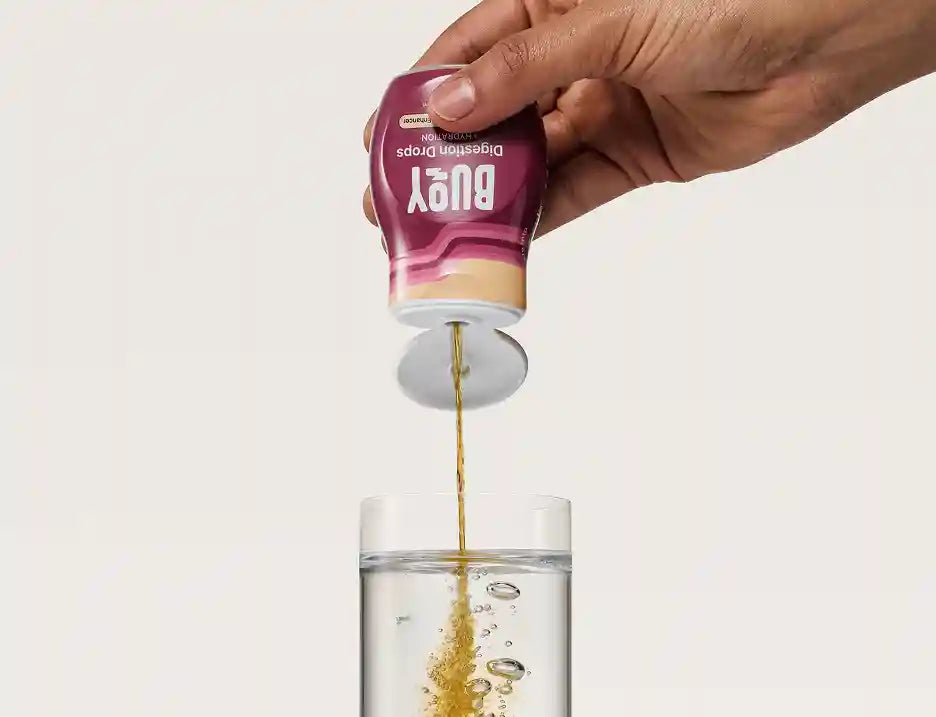
How to Restore Electrolyte Balance
Can a seemingly minor imbalance make a significant impact on our overall well-being? If we're talking about electrolytes, the answer is a resounding yes! When your electrolytes are out of sync, so is your health. But don't worry—it's fixable.
Essential Takeaways
- Rapid and effective hydration is more than a health benefit; it's a cornerstone of peak performance, recovery, and general wellness.
- Hydration Drops are your ally for instant hydration, designed to replenish your body quickly. Integrating these drops into your daily routine ensures optimal hydration, enhances performance, and supports overall well-being.
This guide is your companion in understanding how to fix an electrolyte imbalance, spotting dehydration symptoms, and exploring electrolyte-rich foods. Let's dive in!
- Understanding Electrolyte Imbalances: Causes and Symptoms
- The Importance of Electrolyte Balance for Health
- Fixing Electrolyte Imbalance with Buoy
- Additional Strategies for Balancing Electrolytes
- Electrolyte-Rich Foods and Dietary Recommendations
- Hydration and Electrolyte Balance
Understanding Electrolyte Imbalances: Causes and Symptoms
Electrolyte imbalances can sneak up on us, often triggered by factors like prolonged illness, intense exercise, inadequate diet, or even certain medications (1). Picture this: you're pushing hard in your workouts, trying to hit your personal best, or maybe you're battling a persistent cold. Without even realizing it, you could be tipping the scales of your electrolyte balance (2).
Decoding Electrolyte Imbalances
When we talk about electrolyte imbalances, we're referring to either a surplus or deficiency in essential minerals like sodium, potassium, calcium, and magnesium in your body. These crucial minerals play vital roles in numerous bodily functions, including muscle contractions, heart rhythms, nerve impulses, and maintaining pH balance. When their levels aren't properly balanced, your body quickly signals an alert.
Recognizing the Symptoms of an Electrolyte Imbalance
These imbalances can cause an array of symptoms, with some more noticeable than others. If you've been feeling unusually fatigued, suffering from headaches, noticing an irregular heartbeat, experiencing muscle cramps, or seeing changes in your blood pressure, it might be your body's SOS for an electrolyte rebalance (1).
You can read more about these signs in our blog post Understanding the Signs of Low Electrolytes.
Addressing Electrolyte Imbalances
Remember, an electrolyte imbalance isn't something to ignore. It's like having a misaligned wheel on your car—it might not seem like a big deal at first, but it can lead to more significant issues down the road. Understanding the causes and symptoms of electrolyte imbalance is the first step to regaining control of your health.
The Importance of Electrolyte Balance for Health

Electrolytes are critical to the function of the human body. They regulate a wide range of physiological processes including nerve conduction, muscle contraction, hydration, and maintaining your body's pH balance. Having optimal levels of electrolytes is, therefore, essential for overall health and well-being.
Now, what does this mean in simple terms? Let's break it down.
- Nerve Conduction: Electrolytes are like the body's communication system. They transmit signals from your brain to various parts of your body. For instance, when you decide to lift your hand, it's the electrolytes that transmit this decision from your brain to your arm muscles (1).
- Muscle Contraction: Electrolytes control the contraction and relaxation of muscles. Have you ever experienced a muscle cramp during or after intense exercise? That's often due to an electrolyte imbalance, with insufficient electrolytes leading to involuntary muscle contractions (2).
- Hydration: Electrolytes help regulate body hydration. They determine how much water your body retains or excretes. For example, if you've ever felt bloated after a salty meal, it's because sodium—an electrolyte—causes water retention (3).
- pH Balance: Electrolytes help maintain the right balance of acidity and alkalinity in your body, which is vital for many cellular processes. For instance, when this balance is off, it can lead to conditions such as acidosis or alkalosis, which can cause symptoms like confusion, muscle twitching, and nausea (4).
Maintaining optimal electrolyte levels isn't just beneficial, it's also vital for your health and well-being. An imbalance can lead to various health issues, ranging from minor discomfort to serious conditions (1). Therefore, understanding and monitoring your electrolyte balance is an essential part of maintaining good health.
Fixing Electrolyte Imbalance with Buoy

When it comes to restoring electrolyte balance, Buoy's electrolyte-based drops are a powerhouse. Packed with the vital electrolytes your body needs—sodium, potassium, calcium, and magnesium—these drops can help replenish your electrolyte levels, aid in hydration, and promote a general sense of wellness.
Explore our wide array of electrolyte-dense drops crafted to address your individual health needs:
- Hydration Drops: Arm yourself with our secret weapon for optimal hydration and fluid balance, whether you're navigating a regular day or powering through an intense workout.
- Energy Drops: Uplift your energy levels during strenuous physical activities or whenever you need an added pick-me-up.
- Immunity Drops: Fortify your immune system with our 3-in-1 powerhouse that combines vitamins, antioxidants, minerals, and electrolytes in one potent formulation.
To ensure a well-rounded approach to your electrolyte balance, consider our Daily Wellness Bundle. This comprehensive set contains all three of our specially formulated drops: hydration, energy, and immunity. Together, they work synergistically to help maintain your electrolyte levels, boost your energy, and strengthen your immune system.
Embrace an active lifestyle to its fullest with Buoy drops. Enter a world of optimal energy, enhanced athletic performance, and freedom from muscle cramps. With Buoy, you can achieve your wellness goals and unleash your best self!
Additional Strategies for Balancing Electrolytes
While Buoy's electrolyte and mineral drops are a powerful tool for restoring your electrolyte balance, it's important to remember that balancing electrolytes extends beyond optimal hydration. It involves thoughtful dietary choices, hydration habits, and lifestyle adjustments. Consider incorporating the following strategies:
- Dietary Considerations: Incorporate electrolyte-rich foods into your meals. Fresh fruits and vegetables like bananas, oranges, sweet potatoes, and spinach, as well as dairy products and lean proteins, provide essential electrolytes (1).
- Hydration Practices: Drink an adequate amount of fluids based on your body’s needs and activity level. This can include water, herbal teas, juices, soups, and foods with high water content. Buoy drops can be added to these beverages to supplement your electrolyte needs during periods of heavy sweating or illness (3).
- Lifestyle Adjustments: Engage in regular exercise, ensure adequate rest, and practice stress management. These lifestyle choices contribute to overall well-being and support electrolyte balance (2).
The path to optimal electrolyte balance is a combination of balanced nutrition, correct hydration, mindful lifestyle choices, and, of course, the use of Buoy's electrolyte and mineral drops. With these strategies, achieving and maintaining your electrolyte balance becomes an attainable goal.
Electrolyte-Rich Foods and Dietary Recommendations

Let's talk about your plate. Incorporating electrolyte-rich foods into your diet is a straightforward and delicious way to restore balance. Here are some to consider:
- Sodium: Sources of sodium include broth or soup, cheese, seafood, salted snacks such as pickles and olives, certain vegetables like beets and carrots, and whole grains like bread. However, be cautious with processed foods. While they are often high in sodium, they might not be the healthiest choice due to other health concerns.
- Potassium: Foods like bananas, sweet potatoes, avocados, and spinach are high in potassium.
- Calcium: Turn to dairy products, leafy greens, or fortified plant milks for your calcium fix.
- Magnesium: Nuts, seeds, and whole grains are excellent sources of magnesium (1).
As you enjoy these nutrient-dense foods, consider adding a splash of Buoy drops to your beverages and liquid foods like soups and smoothies. It's a simple yet effective way to enhance your daily electrolyte intake.
To learn more about these essential minerals, explore our in-depth guide on Sodium (Salt) Deficiency: Causes, Symptoms, and Treatment.
Impact of Modern Farming and Water Treatment on Electrolyte Sources
However, it’s important to keep in mind that modern farming practices and water processing methods can reduce the electrolyte content found in our food and water sources (5, 6). Therefore, incorporating a daily premium electrolyte supplement may be necessary, especially if you are active or live in a hot climate.
Hydration and Electrolyte Balance
Hydration plays a key role in maintaining electrolyte balance. Consuming enough fluids helps regulate your electrolyte levels, but when it comes to hydration, quality matters as much as quantity (3). By adding Buoy Hydration Drops to your beverages, you can hydrate and replenish your body's essential electrolytes.
Managing electrolyte imbalance can be challenging, but with certain dietary adjustments, appropriate hydration, and adding Buoy to your daily routine, you can effectively balance your electrolyte levels. By restoring balance, you can ensure your body functions at its best and maintains its necessary equilibrium.
Don't wait to reclaim your health. Try Buoy’s Drops today, and kickstart your journey to optimal electrolyte balance. Feel the difference with Buoy!
References:
-
Healthline. (2019). Electrolytes: Functions, Imbalance, and Sources. Retrieved from https://www.healthline.com/nutrition/electrolytes
-
Popkin, B. M., D'Anci, K. E., & Rosenberg, I. H. (2010). Water, Hydration and Health. Nutrition Reviews, 68(8), 439–458. Retrieved from
https://www.ncbi.nlm.nih.gov/pmc/articles/PMC2908954/
-
Shirreffs, S.M., et al. (2004). Fluid and Electrolyte Needs for Preparation and Recovery from Training and Competition. Journal of Sports Sciences, 22(1), pp. 57–63. Retrieved from https://www.tandfonline.com/doi/abs/10.1080/0264041031000140572
- Koeppen, B. M. (2009). The kidney and acid-base regulation. Advances in Physiology Education, 33(4), 275–281. Retrieved from https://journals.physiology.org/doi/full/10.1152/advan.00054.2009






